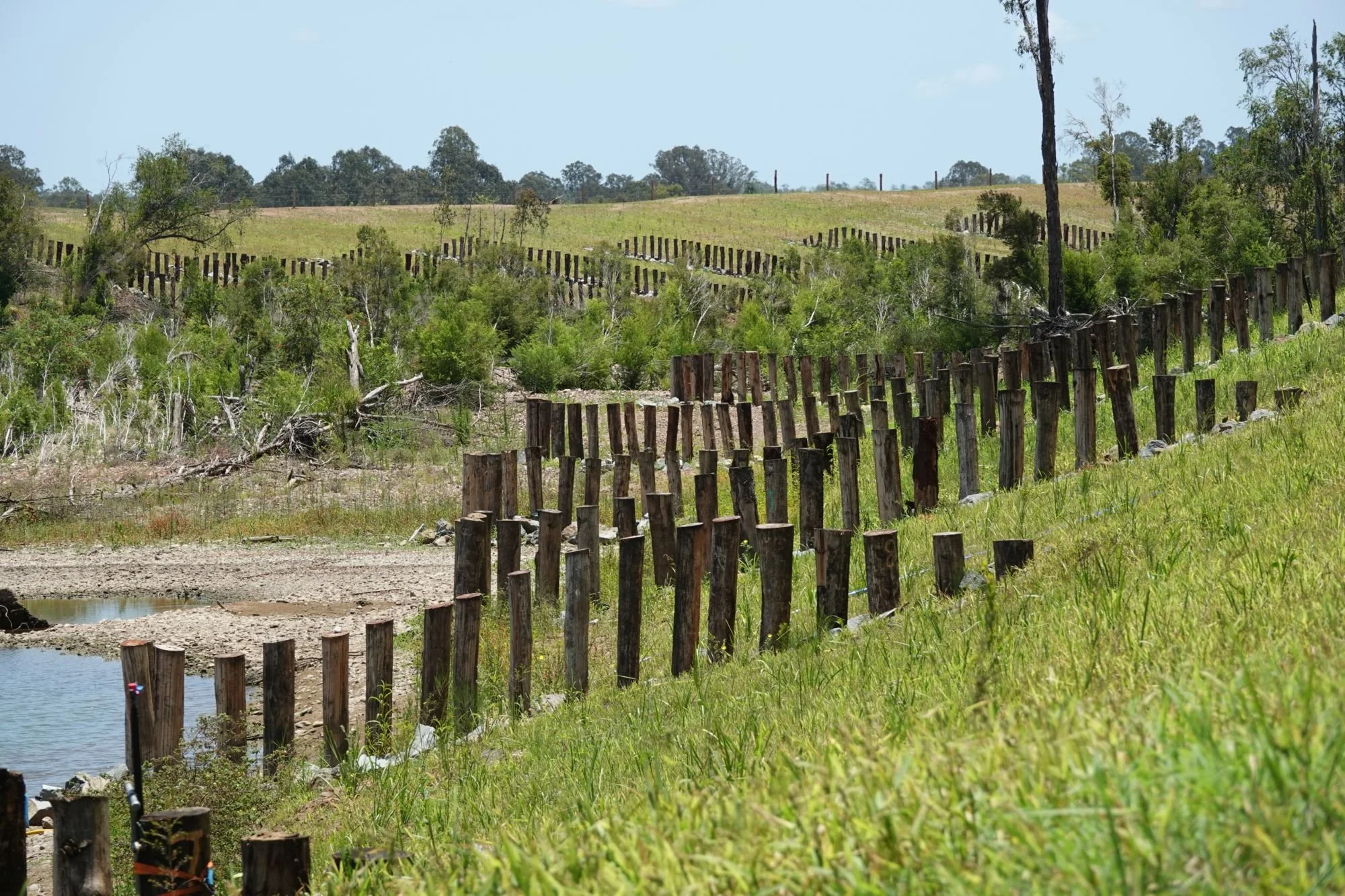Petrie Park works enhance Mary River
The riverbank at Petrie Park was stabilised with timber piling and revegetated with native riparian seedlings suited to flood impacts experienced on the Mary River.
A stakeholder tour was held at Petrie Park recently to showcase works that have occurred as part of the Mary River Recovery Project.
The Mary River Recovery Project is funded by the Great Barrier Reef Foundation and the Australian Government’s Reef Trust.
It’s a collaboration led by Burnett Mary Regional Group (BMRG) with Mary River Catchment Coordinating Committee and Alluvium working with multiple partners, stakeholders and landholders.
The riverbank at Petrie Park was stabilised with timber piling and revegetated with native riparian seedlings suited to flood impacts experienced on the Mary River.
Before these works, since 2009 the riverbank had migrated almost 50 metres, with up to 30m occurring as a result of the 2022 flood events.
An estimated 74,600 cubic metres of sediment loss occurred from this site between 2009 and 2022, flowing towards the Great Barrier Reef.
A report by Alluvium showed that without management intervention, ongoing widening could result in the formation of a new channel alignment through Petrie Park, "and if there is a less resistant underlying material, over time could become the primary flow path of the Mary River".
It's estimated the works at Petrie Park will reduce sediment flow to the Reef by 1144 tonnes per year.
“The establishment of remnant standard riparian vegetation will be an essential element in any program to reduce rates of bank erosion on the Mary River,” the report stated.
“The proposed works should aim to create an environment suitable for vegetation to re-establish, to provide natural bank stability and erosion protection in the future.”
The report said pile field groynes were the preferred approach for protecting bank revegetation works during the establishment period.
"The pile fields will provide short-term erosion protection by reducing near bank velocity and shear stress which provides an environmental suitable for vegetation establishment," it stated.
"As the piles decay over 10-15 years, the vegetation and associated root networks can help reduce rates of bank erosion through a range of mechanisms."
BMRG is pleased the Petrie Park works were completed within budget ahead of schedule; and will prevent further erosion and reduce sediment flow to the Reef.


